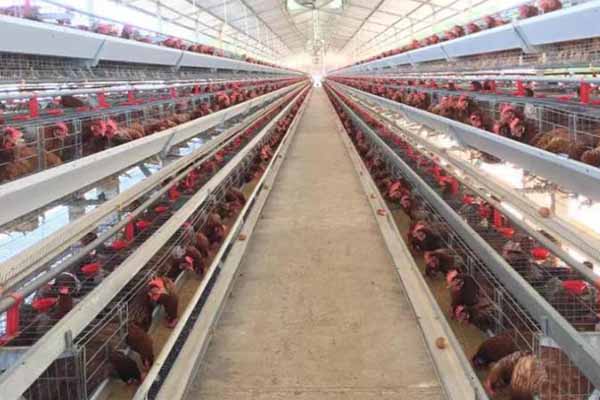50000 Chicken Layer Farm Management: A Comprehensive Guide
Time : 2025-06-30
Introduction
Running a 50,000 chicken layer farm is no small feat. Efficient management is crucial for the success of any poultry operation. In this comprehensive guide, we will explore the key aspects of managing a large-scale chicken layer farm. From equipment and biosecurity to feed management and environmental controls, we will cover it all. This article aims to provide a practical and professional overview of the intricacies involved in managing a 50,000 chicken layer farm.
1. Farm Layout and Equipment
Proper planning of the farm layout is essential for efficient operations. Here are some key considerations when it comes to farm layout and equipment:
– Bird Houses: The layout should include well-designed bird houses that can accommodate the 50,000 chickens. These houses should have adequate space for feeders, waterers, and laying nests.
– Equipment: Invest in high-quality poultry equipment that can handle the volume of birds. Some essential equipment includes automated feeders, waterers, egg collectors, and ventilation systems.
– Sanitation: Sanitation is crucial for the health of the flock. Ensure that all equipment is cleaned and disinfected regularly to prevent the spread of diseases.
– Manpower: Hire skilled staff who are trained in poultry management. Assign specific roles to ensure that each task is handled efficiently.
2. Biosecurity and Disease Control
Implementing robust biosecurity measures is vital to protect your flock from diseases. Here are some key biosecurity practices:
– Clean and Disinfect: Regularly clean and disinfect all areas of the farm, including bird houses, equipment, and vehicles.
– Restrict Access: Limit access to the farm to authorized personnel only. Visitors should undergo a thorough disinfection process before entering.
– Biosecurity Protocol: Establish a comprehensive biosecurity protocol that includes vaccination schedules, disease monitoring, and immediate response to any disease outbreaks.
3. Feed Management
Proper feed management is essential for optimal chicken layer performance. Consider the following aspects:
– Quality Feed: Use high-quality feed that meets the nutritional requirements of your chickens. Consult a veterinarian or poultry nutritionist for a feed formulation suitable for your flock.
– Automated Feeders: Utilize automated feeders to ensure that chickens have access to feed throughout the day. Monitor feed consumption to adjust feeding schedules as needed.
– Water: Provide fresh, clean water at all times. Ensure that waterers are maintained and cleaned regularly to prevent the growth of bacteria and algae.
4. Environmental Control
Maintaining an optimal environment is crucial for the health and productivity of your chickens. Here are some factors to consider:
– Temperature: Keep the temperature within the recommended range (18-22°C or 64-72°F) to promote laying productivity. Utilize heating and cooling systems as needed.
– Humidity: Maintain humidity within the range of 50-60% to prevent respiratory issues. Use ventilation systems to control humidity levels.
– Lighting: Provide appropriate lighting to stimulate laying. Consider using automated lighting systems to mimic natural daylight.
5. Egg Collection and Sorting
Efficient egg collection and sorting are vital to maintain the quality of your eggs. Here are some tips:
– Regular Collection: Collect eggs at least twice a day to prevent soiling and contamination.
– Sorting: Sort eggs based on quality, size, and grade. Use egg graders to ensure consistent egg size and quality.
– Handling: Handle eggs carefully to avoid cracking and ensure they reach the market in perfect condition.
6. Marketing and Sales
Develop a robust marketing and sales strategy to maximize your profits. Consider the following:
– Direct Marketing: Establish direct relationships with retailers, distributors, and restaurants to ensure a steady demand for your eggs.
– Online Presence: Create a website and utilize social media platforms to promote your farm and its products.
– Certifications: Consider obtaining organic or free-range certifications to differentiate your products in the market.
Conclusion
Managing a 50,000 chicken layer farm requires a combination of knowledge, skill, and attention to detail. By implementing the strategies outlined in this guide, you can ensure the health, productivity, and profitability of your operation. Remember that constant monitoring, adaptation, and improvement are key to successful farm management.












